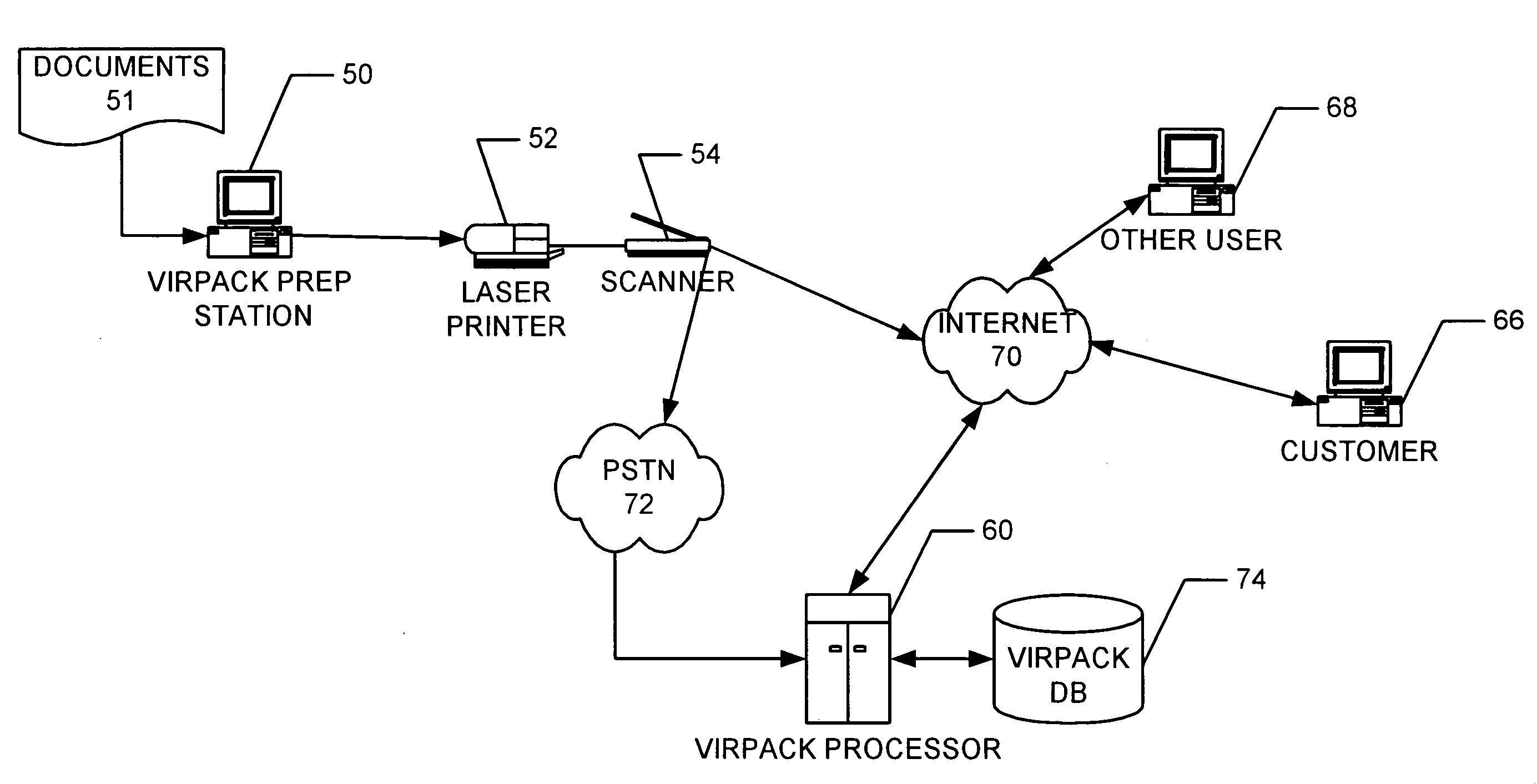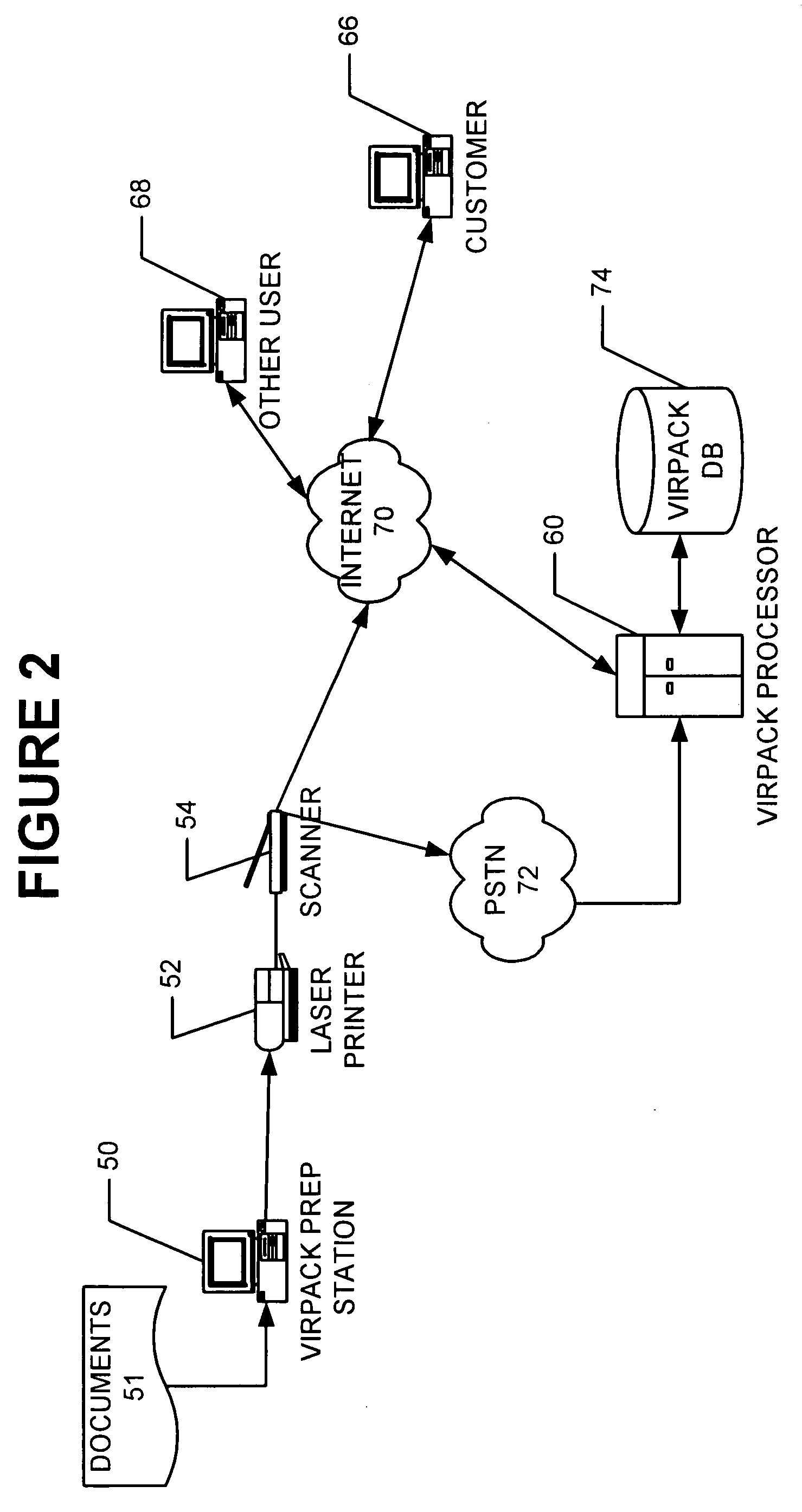System and method for the creation of virtual information packages
a virtual information and package technology, applied in the field of virtual information package system and method, can solve the problems of cumbersome and slow dissemination of printed materials, inability to provide the flexibility and utility of hard paper copies of the same information, and difficulty in re-increasing information and data content to an electronic form, etc., to achieve the effect of simplifying the process, facilitating inspection of contents, and reducing security levels
- Summary
- Abstract
- Description
- Claims
- Application Information
AI Technical Summary
Benefits of technology
Problems solved by technology
Method used
Image
Examples
Embodiment Construction
[0065] As noted above, the present invention is a system and method for creation of an electronic container that comprises a plurality of documents and meta information about the documents. A graphical code is used to assist in extracting information about the documents in the electronic container.
[0066] The Invention can essentially be broken into a number of major components. [0067] a) XWPL—eXtensible Workflow Package Language is an eXtensible Markup Language (XML) based language. One portion of the language defines a standardized method to place information into a machine-readable symbol such as a high-density barcode. The actual symbology used is flexible. Any symbol simply needs to be able to support enough characters of information to be useful. In the event that the data content exceeds the capacity of the symbol, a different symbol may be employed. For example, a 2-D barcode such as a PDF-417 has a limitation of about 2500 characters of information compressed, in the event ...
PUM
 Login to View More
Login to View More Abstract
Description
Claims
Application Information
 Login to View More
Login to View More - R&D
- Intellectual Property
- Life Sciences
- Materials
- Tech Scout
- Unparalleled Data Quality
- Higher Quality Content
- 60% Fewer Hallucinations
Browse by: Latest US Patents, China's latest patents, Technical Efficacy Thesaurus, Application Domain, Technology Topic, Popular Technical Reports.
© 2025 PatSnap. All rights reserved.Legal|Privacy policy|Modern Slavery Act Transparency Statement|Sitemap|About US| Contact US: help@patsnap.com



